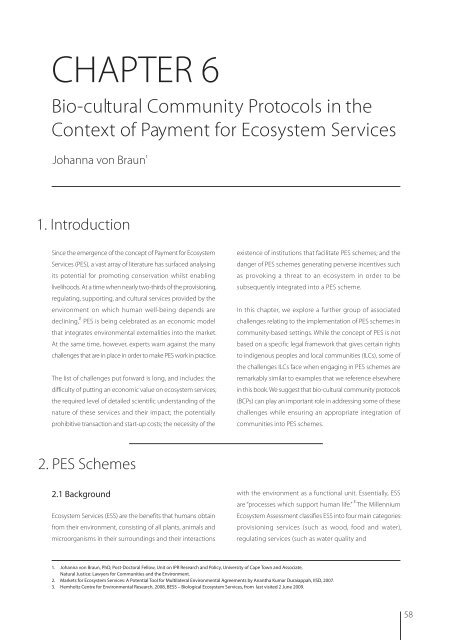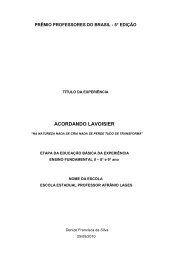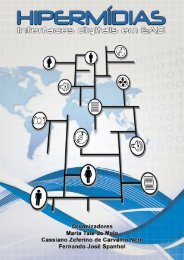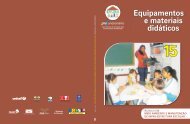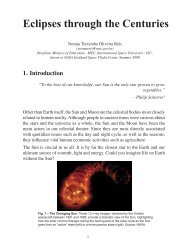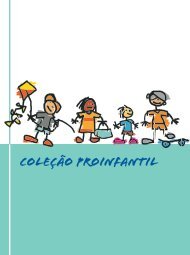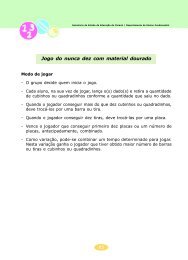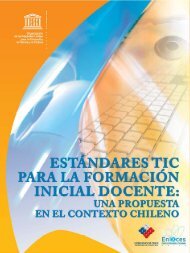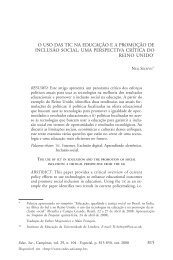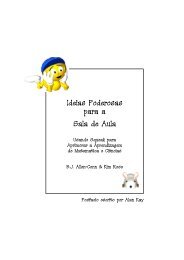BIO-CULTURAL COMMUNITY PROTOCOLS - Portal do Professor
BIO-CULTURAL COMMUNITY PROTOCOLS - Portal do Professor
BIO-CULTURAL COMMUNITY PROTOCOLS - Portal do Professor
Create successful ePaper yourself
Turn your PDF publications into a flip-book with our unique Google optimized e-Paper software.
CHAPTER 6<br />
Bio-cultural Community Protocols in the<br />
Context of Payment for Ecosystem Services<br />
Johanna von Braun 1<br />
1. Introduction<br />
Since the emergence of the concept of Payment for Ecosystem<br />
Services (PES), a vast array of literature has surfaced analysing<br />
its potential for promoting conservation whilst enabling<br />
livelihoods. At a time when nearly two-thirds of the provisioning,<br />
regulating, supporting, and cultural services provided by the<br />
environment on which human well-being depends are<br />
declining, 2<br />
PES is being celebrated as an economic model<br />
that integrates environmental externalities into the market.<br />
At the same time, however, experts warn against the many<br />
challenges that are in place in order to make PES work in practice.<br />
The list of challenges put forward is long, and includes: the<br />
difficulty of putting an economic value on ecosystem services;<br />
the required level of detailed scientific understanding of the<br />
nature of these services and their impact; the potentially<br />
prohibitive transaction and start-up costs; the necessity of the<br />
2. PES Schemes<br />
2.1 Background<br />
Ecosystem Services (ESS) are the benefits that humans obtain<br />
from their environment, consisting of all plants, animals and<br />
microorganisms in their surroundings and their interactions<br />
existence of institutions that facilitate PES schemes; and the<br />
danger of PES schemes generating perverse incentives such<br />
as provoking a threat to an ecosystem in order to be<br />
subsequently integrated into a PES scheme.<br />
In this chapter, we explore a further group of associated<br />
challenges relating to the implementation of PES schemes in<br />
community-based settings. While the concept of PES is not<br />
based on a specific legal framework that gives certain rights<br />
to indigenous peoples and local communities (ILCs), some of<br />
the challenges ILCs face when engaging in PES schemes are<br />
remarkably similar to examples that we reference elsewhere<br />
in this book. We suggest that bio-cultural community protocols<br />
(BCPs) can play an important role in addressing some of these<br />
challenges while ensuring an appropriate integration of<br />
communities into PES schemes.<br />
with the environment as a functional unit. Essentially, ESS<br />
are “processes which support human life.” 3<br />
The Millennium<br />
Ecosystem Assessment classifies ESS into four main categories:<br />
provisioning services (such as wood, food and water),<br />
regulating services (such as water quality and<br />
1. Johanna von Braun, PhD, Post-Doctoral Fellow, Unit on IPR Research and Policy, University of Cape Town and Associate,<br />
Natural Justice: Lawyers for Communities and the Environment.<br />
2. Markets for Ecosystem Services: A Potential Tool for Multilateral Environmental Agreements by Anantha Kumar Duraiappah, IISD, 2007.<br />
3. Hemholtz Centre for Environmental Research, 2008, BESS – Biological Ecosystem Services, from last visited 2 June 2009.<br />
58


